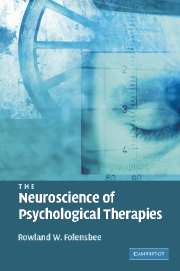1 - Introduction
Published online by Cambridge University Press: 15 December 2009
Summary
Knowledge of brain structure and function has developed rapidly in recent decades; accompanying this increase in knowledge has been the rapid development of our understanding of how brain function relates to human behavior. The roles of specific areas of the brain in specific types of cognitive and emotional processes have been delineated and the complex patterns of interaction between specific areas of the nervous system required for thought and behavior have been increasingly well identified. Processes at the molecular and cellular levels and their relationships to memory, cognition, and affect have been described with increasing clarity. The biological underpinnings of specific psychiatric and neurological disorders have been outlined, and these findings have directly led to improvements in medical, psychological, and behavioral interventions for the various disorders.
The host of advances in the understanding of connections between the brain and behavior can support psychotherapeutic conceptualization and intervention (e.g. Cozolino, 2002; Pliszka, 2003). However, it is the author's experience that the vastness of the relevant literature combined with the complexity of the relationships between brain function and behavior, affect, and cognition serve to preclude the use of such understanding by many practicing clinicians. The terms alone are frightening: dorsolateral prefrontal cortex, superior temporal gyrus, ventricular epithelium. The steps and interactions in the brain comprising so basic a task as focusing attention (Posner & Raichle, 1994) can leave a clinician feeling hopeless in regard to ever understanding enough about the brain to apply such information to clinical intervention.
- Type
- Chapter
- Information
- The Neuroscience of Psychological Therapies , pp. 1 - 4Publisher: Cambridge University PressPrint publication year: 2007



